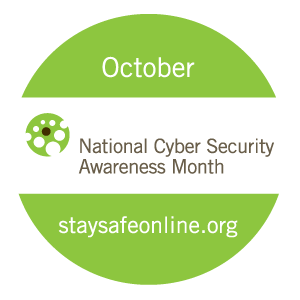The Issue
Before the U.S. Supreme Court is a case to decide how courts should determine someone’s online communications: whether it is threatening or is protected First Amendment speech. The specific case is Anthony Douglas Elonis vs. United States. Elonis was convicted of making threats against a variety of people, including his estranged wife on Facebook.
Elonis’ threats of harm against his wife included a rap lyric that said, “Fold up your PFA [protection from abuse order]…is it thick enough to stop a bullet,” as well as a detailed post about how it technically wasn’t illegal for him to say: “the best place to fire a mortar launcher at her house would be from the cornfield behind it because of easy access to a getaway road and you’d have a clear line of sight through the sun room,” accompanied by a diagram. His other threats included wanting to blow up the state police and sheriff departments; threats against an FBI agent; and claims to make a name for himself by “[initiating] the most heinous school shooting ever imagined.”
The issue at hand: should Elonis’ intention of carrying out those threats have to be proven for those threats to be credible? Elonis and his supporters argue that “subjective intent” is the standard to prove threats are real. NNEDV and others argue that “objective intent,” taking into account the content and the context of the statements, is the correct standard to determine the credibility of threats.
Are Online Threats Real?
The perceived anonymity of the internet has allowed many to harass, intimidate, and threaten others, particularly women, in more ways than ever before. In recent years, we have seen a rise in young people committing suicide after online bullying, female bloggers and gamers viciously attacked online, and women being threatened by “anonymous” mobs for daring to speak out on women’s issues.
The reality is that after any kind of threat, victims fear for their safety. They will leave their homes, change their names, change their phone numbers, abandon careers, leave school, and withdraw from online spaces, including major platforms such as Twitter or Facebook. Survivors have gone to great lengths to feel safer. So are online threats real? The consequences to the victims are very real.
Furthermore, in most cases of domestic violence and stalking, online threats aren’t made in isolation. They are often made as part of other abusive behavior, including physical, emotional, or sexual abuse; intimation; harassment; and attempts to control the other person. Nor are victims' fears unfounded. Each day, an average of three women are killed by a former or current intimate partner in the United States. Context is important. If a victim is so terrified of her abuser, and a judge agrees and gives her a protection order that forbids the abuser from even going near the victim—that context matters. So when he goes home and writes a “lyric” about how a protection order will not stop a bullet and posts it online so everyone can see—that is terrifying. This isn’t a Taylor Swift breakup song. This is a threat.
Freedom of Speech
Those in defense of Elonis argue that the intent matters for a variety of reason. The central argument is that if threats are assessed by the victim’s perception of the threat rather than the person’s intent when making the threat, it could chill freedom of speech. In ACLU’s brief, not taking into account the speaker’s intent could result in “self-censorship [so as] to avoid the potentially serious consequences of misjudging how his words will be received.” Moreover, the arguments claim that it is difficult to assess how speech is perceived when made over the internet because the audience’s reaction to online threats could be interpreted in so many different ways.
The Marion B. Brechner First Amendment Project claims that requiring proof of intent is necessary because Elonis’ statements were artistic rap lyrics. The inflammatory and violent statements, while distasteful, were artistic self expression. Those who are unfamiliar with the rap genre, the argument in the brief asserts, could hold negative stereotypes and “falsely and incorrectly interpret them as a threat of violence of unlawful conduct.”
Online Threats and Domestic Violence, Stalking, and Violence Against Women
Their arguments only work if you lived in a world where outlandish speech is only made in the name of art or political speech. In the real world, online threats, particularly against women or intimate partners, are not artistic or political speech. It is violent speech that terrorizes victims. Regardless of whether the abuser or stalker intends to blow up the victim’s home with a mortar or cut her up until she’s soaked in blood and dying (another of Elonis’ online posts), he is accomplishing one of his goals, which is to terrify the victim.
Threats against women cannot be minimized because they happen online. Or because the abuser hasn’t yet carried out the crime. Or because we’re worried that enforcing consequences for these threats will cause people to feel less free to speak their minds and hinder freedom of speech. In the context of domestic violence and stalking, threatening language is threatening. Needing to show subjective intent would make it more difficult to hold abusers and stalkers accountable for terrifying victims and would imply that it’s okay to make such threats, as long as, you know, you didn’t really mean it.
Read our brief for the Elonis v. United States case here.
Read our official press release statement here.


